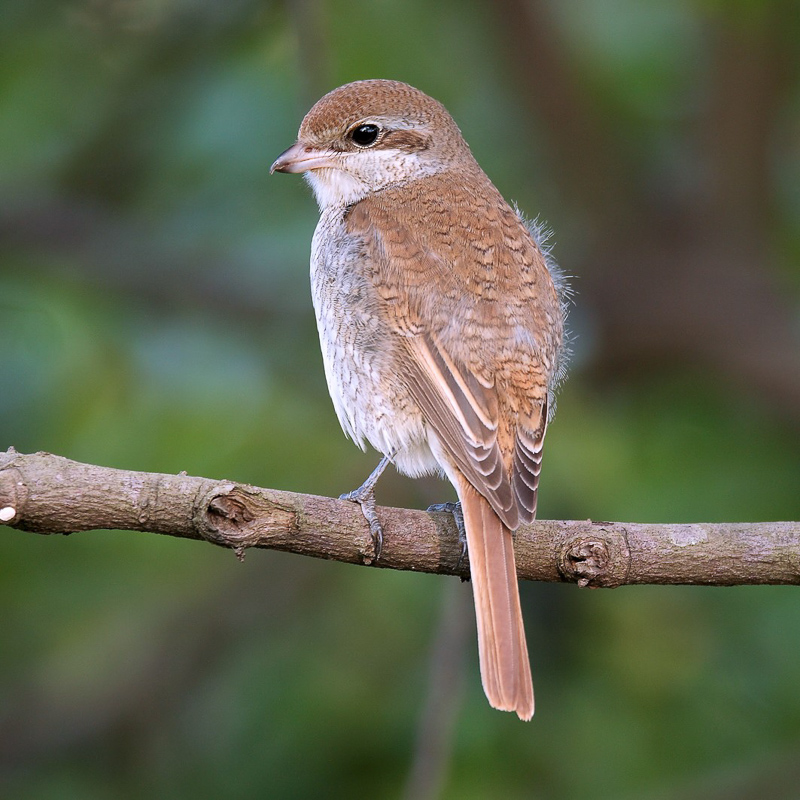Red-backed Shrike Lanius collurio 紅背伯勞
Category I. Accidental.
IDENTIFICATION

Oct. 2008, Michelle and Peter Wong. First-winter.
17-19 cm. First-winters are very similar to female and immature Brown Shrike but differ in brighter rufous tones above (strongest on uppertail coverts), poorly-defined browner mask, grey-tinged nape and neck sides, whitish underparts, longer primary projection, less rounded shorter tail, rather slender bill and whitish outer web to outermost primary (Shirihai and Svensson 2018). Adult females are similar.
The adult male is has pearl grey crown to hind neck, a contrasting black mask from forehead to ear coverts, chestnut mantle, scapulars and edges to tertials, white underparts suffused pinkish and white bases to sides of black tail.
VOCALISATIONS
Calls and alarm calls are similar to those of Brown Shrike.
DISTRIBUTION & HABITAT PREFERENCE
Occurs in open-country areas and most records have been at two sites good for migrants: Long Valley and Ho Man Tin.
OCCURRENCE
All records have involved single first-winters in the period 28 September to 9 November.
2008: Ho Man Tin during 6-9 October.
2009: trapped in Lok Ma Chau Loop on 7 October.
2012: separate birds at Long Valley on 30 September and 3 November.
2013: Long Valley during 1-2 October.
2014: Long Valley on 2 November.
2018: Ho Man Tin on 9 November.
2019: Long Valley during 28-29 September.
BEHAVIOUR, DIET & FORAGING
Typical shrike foraging behaviour occupying perches with good visibility and dropping down to ground to capture invertebrates.
SYSTEMATICS & RANGE
Monotypic. Breeds from continental Europe east through European Russia and west Siberia as far as northwest China and south to east Mediterranean and the southern shore of the Caspian Sea; winters in sub-Saharan Africa (Yosef et al. 2020, Liu and Chen 2020).
CONSERVATION STATUS
IUCN: Least Concern. Population trend stable.
Liu, Y. and Y. H. Chen (eds) (2020). The CNG Field Guide to the Birds of China (in Chinese). Hunan Science and Technology Publication House, Changsha.
Shirihai, H. and L. Svensson (2018). Handbook of Western Palearctic Birds Vol. 2. Passerines: Flycatchers to Buntings. Helm, London.
To, W. Y. (2011). Red-backed Shrike Lanius collurio at Ho Man Tin. The first Hong Kong record. Hong Kong Bird Report 2007-08: 258-259.
Yosef, R., ISWG International Shrike Working Group, and D. A. Christie (2020). Red-backed Shrike (Lanius collurio), version 1.0. In Birds of the World (J. del Hoyo, A. Elliott, J. Sargatal, D. A. Christie, and E. de Juana, Editors). Cornell Lab of Ornithology, Ithaca, NY, USA. https://doi.org/10.2173/bow.rebshr1.01

